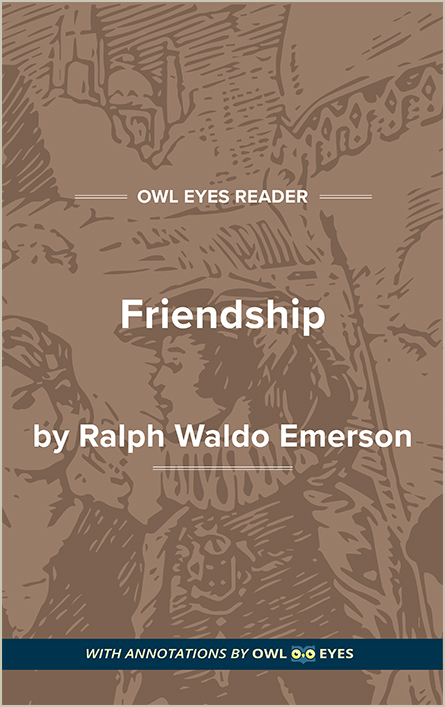Analysis Pages
Simile in Friendship
Simile Examples in Friendship:
"Friendship"
🔒"It treats its object as a god, that it may deify both...." See in text ("Friendship")
"as I do with my books..." See in text ("Friendship")
"we meet as water with water..." See in text ("Friendship")
"as the tree puts forth leaves, and presently, by the germination of new buds, extrudes the old leaf?..." See in text ("Friendship")
"like the immortality of the soul..." See in text ("Friendship")
"material effects of fire..." See in text ("Friendship")
"an element of love like a fine ether..." See in text ("Friendship")
"chills like east winds..." See in text ("Friendship")

